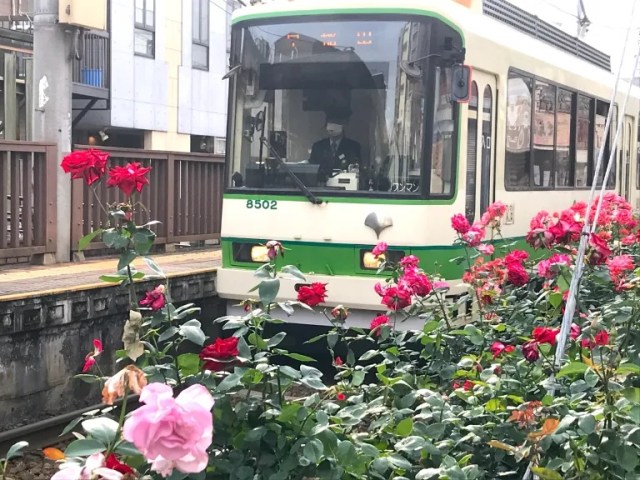
Beautiful blossoms and a taste of the slow life are waiting on the Arakawa Line.
Tokyo’s excellent public transportation system isn’t a recent addition to the city. For generations, trains and subways have been the best way for Tokyoites to get around, but the city’s long-term relationship with rail is a continually evolving one, which means that sometimes once-bustling lines fade away into relative obscurity as different parts of town become more popular to live or work in.
For example, Tokyo used to have a much more extensive streetcar network, which has now been almost entirely removed. One place where you’ll still find them, though, is along the Toden Arakawa Line, also known as the Tokyo Sakura Tram. Connecting Arakawa and Shinjuku Wards, the Arakawa Line doesn’t get a whole lot of use these days, as it’s been largely superseded by newer train and subway lines. It’s still absolutely worth a ride, though, if you’re looking for a glimpse of a more relaxed, old-fashioned way of life in Tokyo, and it’s especially worth riding in May, when the roses are in bloom.
140 different types of roses are planted along a four-kilometer (2.5-mile) section of the Arakawa Line, stretching from Minowabashi to Arakawa-shakomae Stations. The flowers first appeared as part of a 1985 public beautification campaign with the goal of “Let’s make Arakawa a place with the scent of roses,” and the plants are cared for to this day by the Arakawa Rose Society, a volunteer organization made up of local residents.
There’s a charming, low-key simplicity to the landscaping, really making if feel like the community is welcoming you to its home garden.
The layout of the tracks means that cars travel right next to the flowers, making the rose-lined sections great not only for those hoping to view the blossoms up-close, but also for rail fans who want to snap pictures of the trains and roses together.
Part of the reason why Tokyo’s trams have largely been replaced with trains and subways is that, by nature of often being on the street, streetcars have to travel more slowly for traffic safety. This is actually a plus, though, if you’re on the Arakawa Line to enjoy the ride and view. The leisurely pace makes it feel a little less like just a way to get from Point A to Point B and a little more like a theme park ride.
Not that the price of an Arakawa Line ticket is anywhere near the admission fee for Tokyo Disneyland or Fuji-Q Highland. The Arakawa Line charges a flat rate of 170 yen (US$1.10) for adults and 90 yen for children, regardless of how many stops you’re riding for. So if you think of your ride as a train trip through a rose garden, and one that’s not nearly as crowded as many of Tokyo’s trendier green spaces, it’s a really great deal.
There isn’t any sort of advance ticket purchase or seat reservation system for the Arakawa Line, but with roses on both sides of the track, there’s really not a bad spot to sit or stand. If you can, though, we recommend at least taking a peek out the front of the train, so you can see the dual lines of flowers at the same time.
Because there are so many different types of roses along the line, they don’t all bloom at the same time, and in addition to May, October is also a great time to see several varieties. The May blooming is especially nice, though, because it coincides with the Japanese social phenomenon known as Gogatsubyo, or “May Sickness.”
In Japan, the school and business years begin in April. For students and workers, there’s often a sense of excitement as they start new jobs or classes, especially if they’ve just entered a new company or school. The first few weeks are a whirlwind of fresh experiences and steady skill acquisition, followed by a week’s vacation for Golden Week, the string of holidays straddling late April and early May. Coming back from Golden Week is, for a lot of people, a stressful, gloomy time. Serious responsibilities start to set in now that training and orientation are over, and it can be hard to grapple with day-to-day drudgery as the stuff that felt so interesting a month ago starts to feel repetitive, yet still challenging due to lack of familiarity.
In time, for most people that initial emotional high and subsequent low balance out as they get used to dealing with the recurring challenges of their position and settle into a more comfortable, familiar routine. When it’s still May, though, some people can be feeling down in the dumps, so it can be good for the soul to take a moment, and a deep breath, and look at some beautiful, soothing flowers while reminding yourself that, just like a ride on the Arakawa Line, sometimes life is all about figuring out how to enjoy the ride.
Photos ©SoraNews24
● Want to hear about SoraNews24’s latest articles as soon as they’re published? Follow us on Facebook and Twitter!
[ Read in Japanese ]

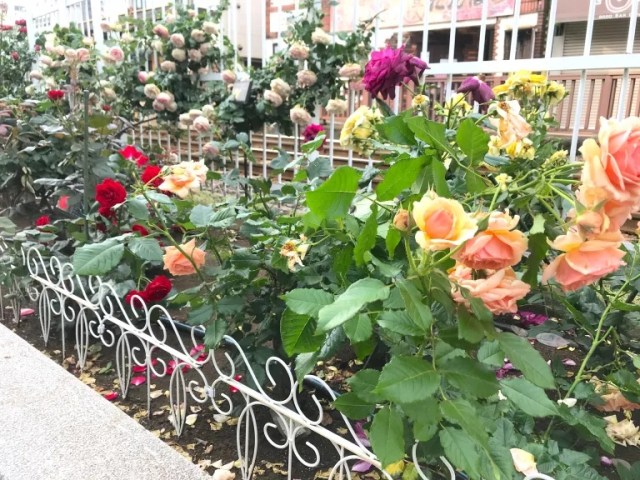
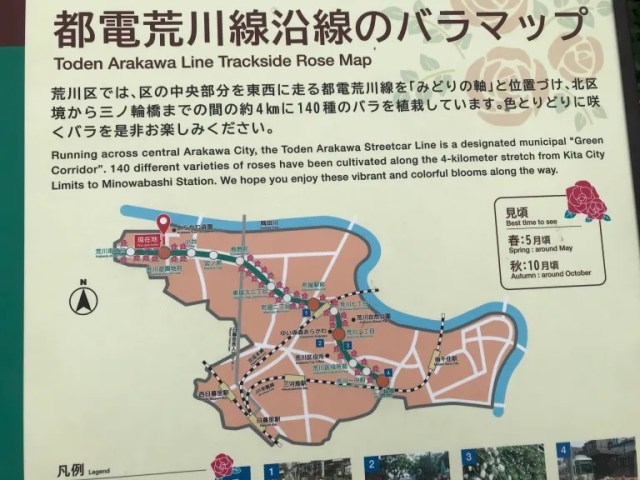
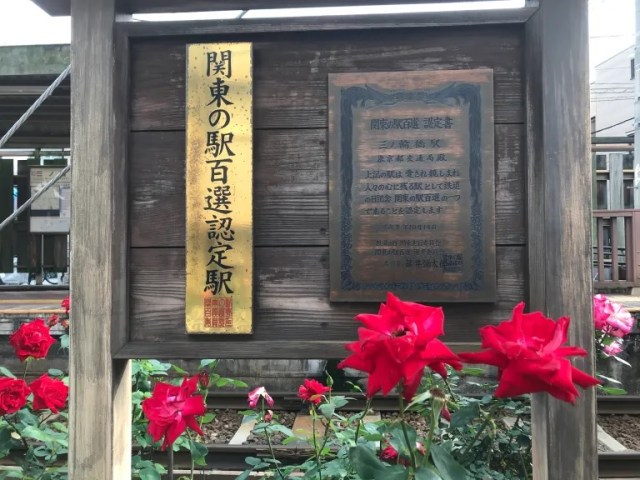
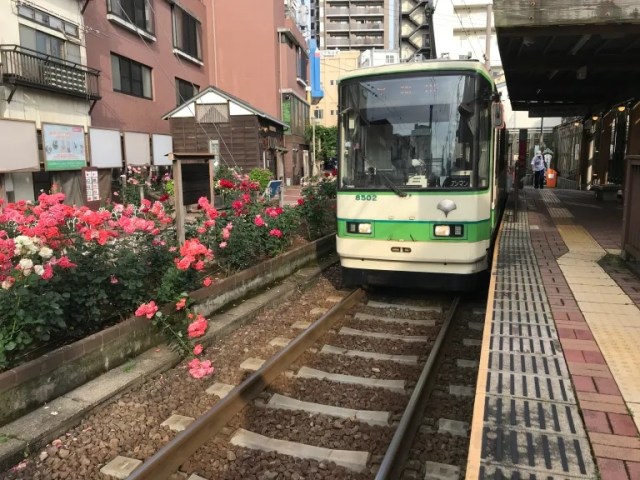
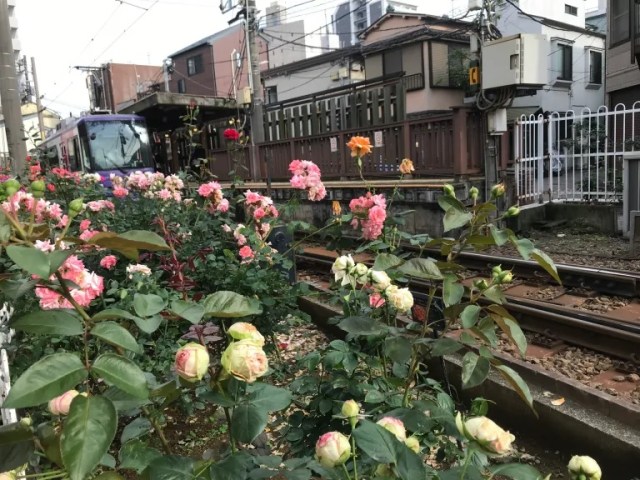
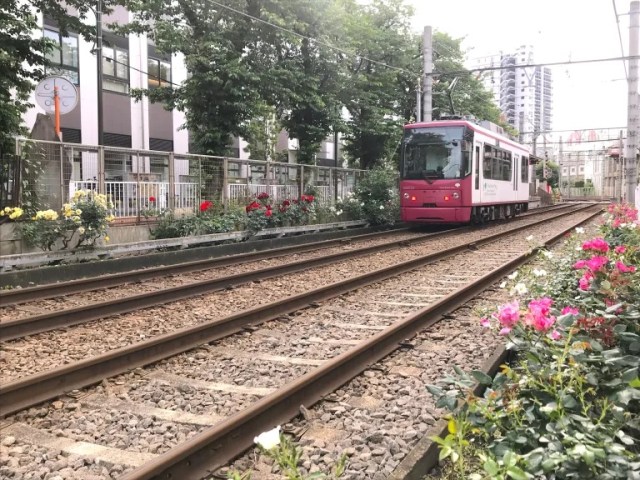
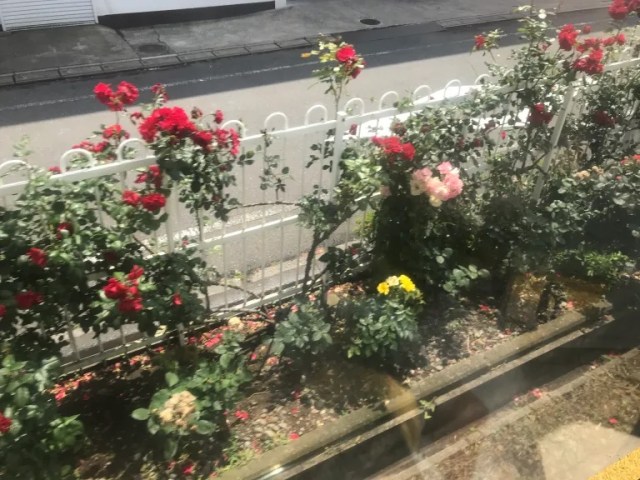
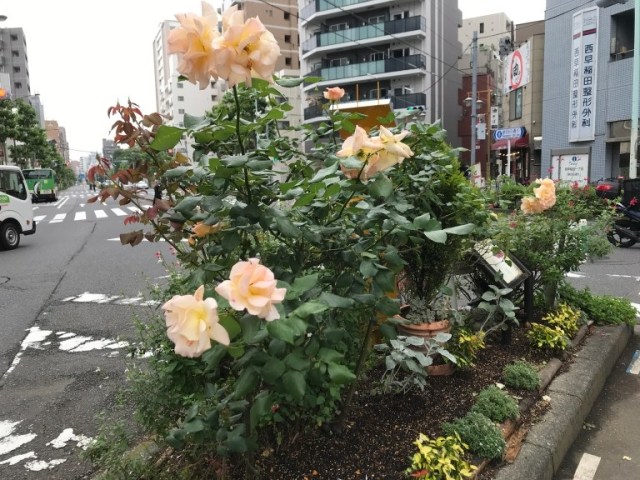
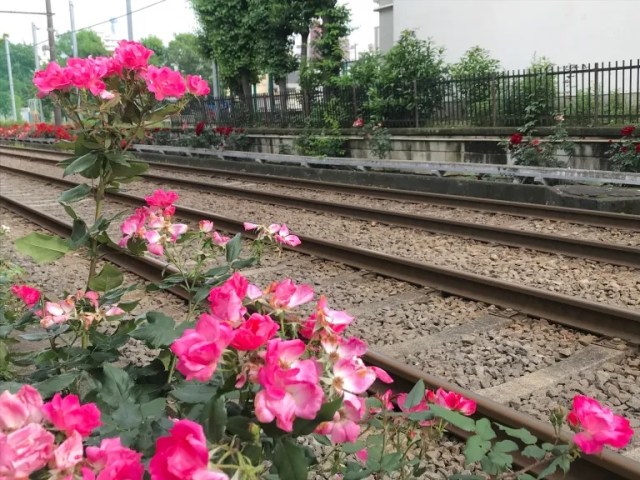
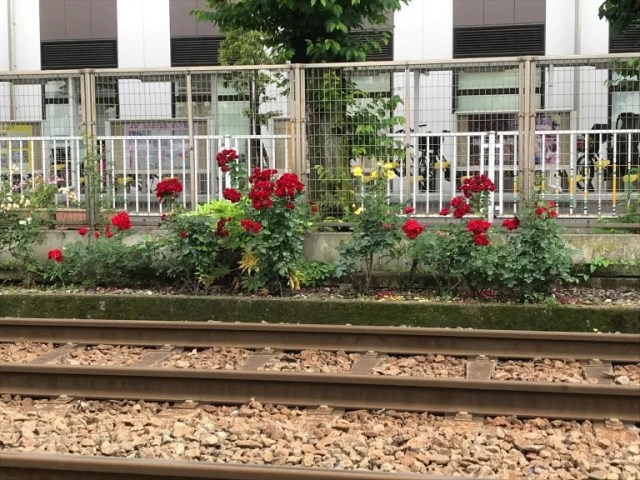
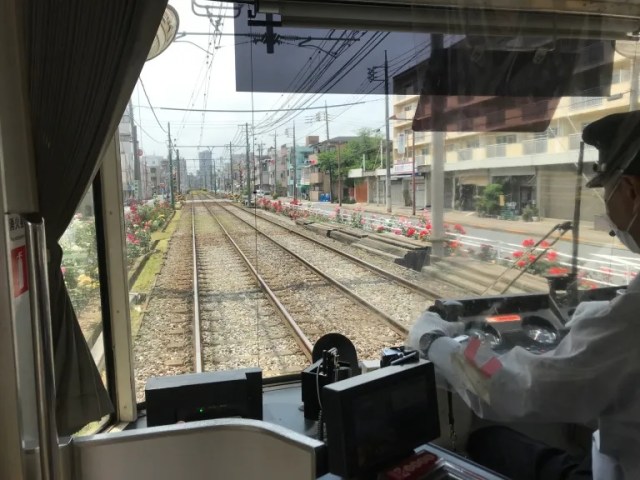
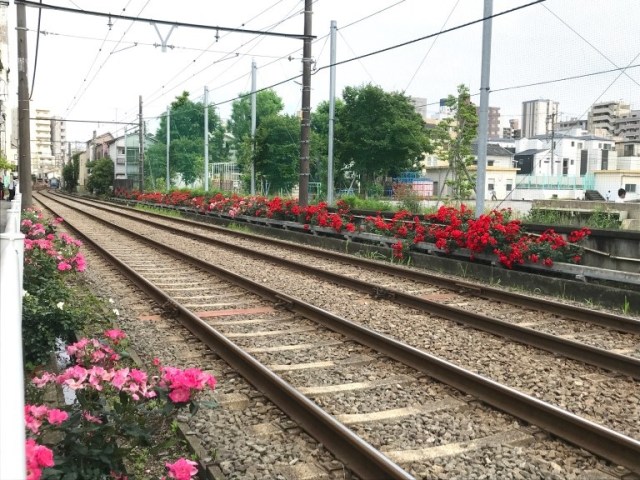
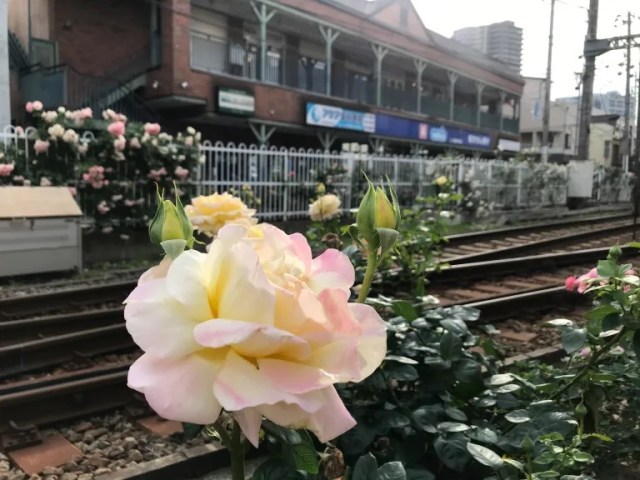
 “Men-only train car” to run in Tokyo as part of “Weak Men’s” association awareness campaign
“Men-only train car” to run in Tokyo as part of “Weak Men’s” association awareness campaign A ranking of Tokyo’s 10 best train and subway lines for spotting handsome men
A ranking of Tokyo’s 10 best train and subway lines for spotting handsome men Sushi Pokémon Tatsugiri inspires real-life Pokémon sushi and Japanese kitchenware line【Photos】
Sushi Pokémon Tatsugiri inspires real-life Pokémon sushi and Japanese kitchenware line【Photos】 We travel across the city like royalty — Hiroshima streetcar turns into fancy, private dining area
We travel across the city like royalty — Hiroshima streetcar turns into fancy, private dining area Tokyo restaurant’s crazy huge rice omelet has 600 grams (1.3 pounds) of rice
Tokyo restaurant’s crazy huge rice omelet has 600 grams (1.3 pounds) of rice Four words that mean something very different in east Japan and Kyoto
Four words that mean something very different in east Japan and Kyoto Studio Ghibli releases My Neighbour Totoro neckties in Japan
Studio Ghibli releases My Neighbour Totoro neckties in Japan Nintendo unveils new Super Mario travel item merch line just in time for midsummer trips【Photos】
Nintendo unveils new Super Mario travel item merch line just in time for midsummer trips【Photos】 Japan’s new canned chu-hai with fresh lemon slice: disappointing gimmick or drink revelation?
Japan’s new canned chu-hai with fresh lemon slice: disappointing gimmick or drink revelation? Headed to the beautiful island under two hours from Tokyo? This sashimi restaurant is the first place you should go
Headed to the beautiful island under two hours from Tokyo? This sashimi restaurant is the first place you should go Low price, free booze and curry, late check-out, and great location — Akihabara capsule hotel has it all
Low price, free booze and curry, late check-out, and great location — Akihabara capsule hotel has it all How to travel from Tokyo to Hiroshima by train for 500 yen
How to travel from Tokyo to Hiroshima by train for 500 yen Osaka man arrested for trying to rob woman with necktie that says “Police”
Osaka man arrested for trying to rob woman with necktie that says “Police” Survey reveals disturbing statistics about if Japanese people wash hands after going to bathroom
Survey reveals disturbing statistics about if Japanese people wash hands after going to bathroom Tokyo government creating its own official dating app, slated to launch this summer
Tokyo government creating its own official dating app, slated to launch this summer You can be on this beautiful Japanese island in less than two hours from downtown Tokyo
You can be on this beautiful Japanese island in less than two hours from downtown Tokyo Studio Ghibli releases new Totoro collection to keep us hydrated all summer long
Studio Ghibli releases new Totoro collection to keep us hydrated all summer long Pizza Hut made a Cardcaptor Sakura Pizza, and its ingredients are as crazy as its looks
Pizza Hut made a Cardcaptor Sakura Pizza, and its ingredients are as crazy as its looks 5 reasons why foreign tourists should skip Tsukiji and go to a different place in Tokyo instead
5 reasons why foreign tourists should skip Tsukiji and go to a different place in Tokyo instead One Piece celebrates 25th anniversary with awesome new Uniqlo T-shirt line tracing series’ history
One Piece celebrates 25th anniversary with awesome new Uniqlo T-shirt line tracing series’ history The Ghibli Park real-world Totoro house’s kitchen and bath actually get used by staff【Pics】
The Ghibli Park real-world Totoro house’s kitchen and bath actually get used by staff【Pics】 Daiso to change Japanese closing-time music because foreign tourists aren’t taking the hint
Daiso to change Japanese closing-time music because foreign tourists aren’t taking the hint The method to save a seat in Japan shows how awesomely safe the country is【Video】
The method to save a seat in Japan shows how awesomely safe the country is【Video】 Starbucks Japan has a miniature collection, but you’ll need patience to get it
Starbucks Japan has a miniature collection, but you’ll need patience to get it Himakajima: The Japanese island with one traffic light that only turns green once a year
Himakajima: The Japanese island with one traffic light that only turns green once a year Tourist ban now in effect in Kyoto’s Gion geisha district…but are visitors obeying the rules?
Tourist ban now in effect in Kyoto’s Gion geisha district…but are visitors obeying the rules? Starbucks releases an official green tea chai latte with special Japanese ingredients
Starbucks releases an official green tea chai latte with special Japanese ingredients Tourists damage Mt Fuji Lawson blackout screen that was meant to stop bad-mannered visitors
Tourists damage Mt Fuji Lawson blackout screen that was meant to stop bad-mannered visitors Practical Zelda Tears of the Kingdom merch is here to be Hyrule-helpful in your daily life【Pics】
Practical Zelda Tears of the Kingdom merch is here to be Hyrule-helpful in your daily life【Pics】 Studio Ghibli Uniqlo shirts and bags on sale now, but not in Japan【Photos】
Studio Ghibli Uniqlo shirts and bags on sale now, but not in Japan【Photos】 Japanese department store rooftop is a secret oasis where you can escape the crowds in Tokyo
Japanese department store rooftop is a secret oasis where you can escape the crowds in Tokyo New Hello Kitty and friends summer kimono are perfect for Sanrio-loving parents, kids, and sisters
New Hello Kitty and friends summer kimono are perfect for Sanrio-loving parents, kids, and sisters McDonald’s new Happy Meals offer up cute and practical Sanrio lifestyle goods
McDonald’s new Happy Meals offer up cute and practical Sanrio lifestyle goods Sales of Japan’s most convenient train ticket/shopping payment cards suspended indefinitely
Sales of Japan’s most convenient train ticket/shopping payment cards suspended indefinitely Sold-out Studio Ghibli desktop humidifiers are back so Totoro can help you through the dry season
Sold-out Studio Ghibli desktop humidifiers are back so Totoro can help you through the dry season Japanese government to make first change to romanization spelling rules since the 1950s
Japanese government to make first change to romanization spelling rules since the 1950s Foreigner’s request for help in Tokyo makes us sad for the state of society
Foreigner’s request for help in Tokyo makes us sad for the state of society Ghibli founders Toshio Suzuki and Hayao Miyazaki contribute to Japanese whisky Totoro label design
Ghibli founders Toshio Suzuki and Hayao Miyazaki contribute to Japanese whisky Totoro label design Tokyo’s most famous Starbucks is closed
Tokyo’s most famous Starbucks is closed Doraemon found buried at sea as scene from 1993 anime becomes real life【Photos】
Doraemon found buried at sea as scene from 1993 anime becomes real life【Photos】 One Piece characters’ nationalities revealed, but fans have mixed opinions
One Piece characters’ nationalities revealed, but fans have mixed opinions Life-size vibrating Legend of Zelda Master Sword for sale from Nintendo【Photos】
Life-size vibrating Legend of Zelda Master Sword for sale from Nintendo【Photos】 Often-forgotten Totoro character is the star of these awesome two-in-one Ghibli capsule toys【Vid】
Often-forgotten Totoro character is the star of these awesome two-in-one Ghibli capsule toys【Vid】 25-year bond between man and fish in Chiba touches the world【Video】
25-year bond between man and fish in Chiba touches the world【Video】 Japanese resort travel company is offering exciting “revenge” graduation trips
Japanese resort travel company is offering exciting “revenge” graduation trips Super Mario and Gap Japan team up for new Nintendo clothing line【Photos】
Super Mario and Gap Japan team up for new Nintendo clothing line【Photos】 Starbucks close to total Japan domination
Starbucks close to total Japan domination “We just wanted to see them stop!” Four train otaku arrested for throwing smoke bombs at trains
“We just wanted to see them stop!” Four train otaku arrested for throwing smoke bombs at trains We channel Sen from Ghibli’s Spirited Away and travel to a Japanese train station by the sea
We channel Sen from Ghibli’s Spirited Away and travel to a Japanese train station by the sea We visit Tokyo’s Reversible Destiny Lofts, the apartments designed to make you live forever【Pics】
We visit Tokyo’s Reversible Destiny Lofts, the apartments designed to make you live forever【Pics】 Tokyo subway bribes people with free noodles to get them to take earlier, non-rush hour trains
Tokyo subway bribes people with free noodles to get them to take earlier, non-rush hour trains These are the 11 most crowded trains in Japan…and surprise! They’re all in the Tokyo area
These are the 11 most crowded trains in Japan…and surprise! They’re all in the Tokyo area Enjoy hanami cherry blossom viewing on the Ginza Line Sakura Train in Tokyo
Enjoy hanami cherry blossom viewing on the Ginza Line Sakura Train in Tokyo Train ride through Nagasaki Lantern Festival looks like a trip to the world of Spirited Away【Vid】
Train ride through Nagasaki Lantern Festival looks like a trip to the world of Spirited Away【Vid】 What’s the best part of Tokyo to live in, and why? Survey gives the top six picks
What’s the best part of Tokyo to live in, and why? Survey gives the top six picks Felissimo adds new “Tokyo Seeds” collection to its popular 500 Colored Pencils series
Felissimo adds new “Tokyo Seeds” collection to its popular 500 Colored Pencils series New Japan rail pass gives you a week of free rides in a huge space to chase the cherry blossoms
New Japan rail pass gives you a week of free rides in a huge space to chase the cherry blossoms
Leave a Reply